Occupational Dermatoses
NOTE: This page is archived for historical purposes and is no longer being maintained or updated.
Slides 124 to 128
Slide 124 - Phytophotodermatitis
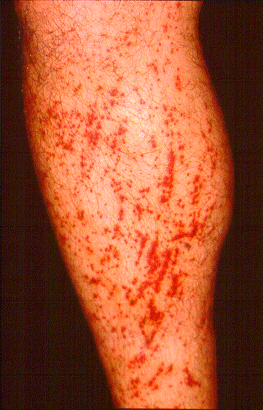
Plant dermatitis is common among landscapers, nurserymen and forestry workers. The morphologic pattern is helpful in determining the offending agent. Microvesicular dermatitis suggests allergic contact dermatitis, such as poison ivy dermatitis. Photodistributed or streaky macular erythema suggests a phytophotodermatitis, such as lime, fig or meadow parsnip dermatitis. Agave dermatitis is seen among landscapers who come in contact with the juice from the leaves of the agave plant. Agave dermatitis is an irritant contact dermatitis, resulting in varying degrees of epithelial and vascular necrosis. The vascular necrosis results in purpura.
Slide 125 - Allergic Plant Dermatitis
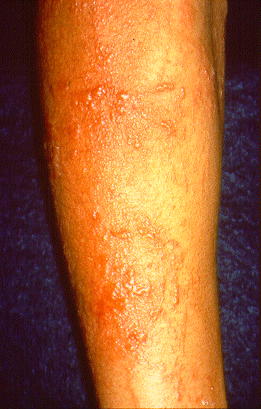
Patterns of distribution often predict the offending allergen in cases of allergic occupational dermatitis. Streaks of dermatitis suggest a point source of allergen. This is the typical pattern of allergic plant dermatitis.
Slide 126 - Poison Ivy Leaf
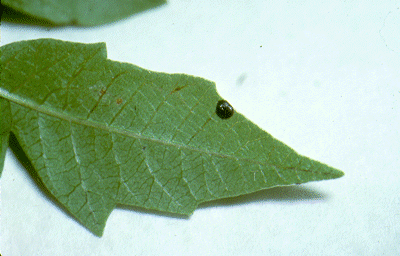
Many plants, such as poison ivy, do not release an allergen until the leaf is injured. The black resin visible on this poison ivy leaf results in a streak of dermatitis when an arm or leg moves past it.
Slide 127 - Allergic Shoe or Work Boot Dermatitis
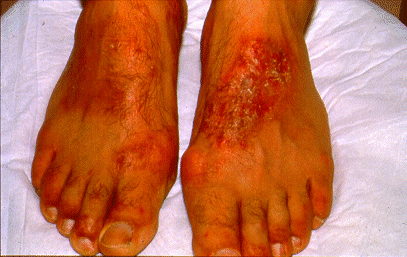
Patches of dermatitis involving the dorsa of the feet generally represent allergic shoe or work boot den-natitis. Mercaptobenzothiazole is the most common allergen. The allergen is widely distributed in rubber and adhesives as well as cutting oils, antifreeze, detergents, flea powders and fungicides. The patient must be counseled about all sources of exposure.
Slide 128 - Work Boot Dermatitis on Ankles
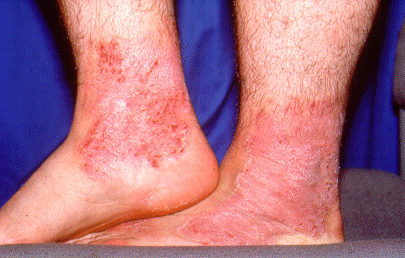
Work boot dermatitis commonly involves the ankles. Other common sites of involvement are heel, toe and dorsum of foot. (Photo courtesy of MAJ Richard Vinson, MC USA).
- Page last reviewed: January 5, 1998 (archived document)
- Content source:
- National Institute for Occupational Safety and Health Health Effects Laboratory Division (HELD)


 ShareCompartir
ShareCompartir